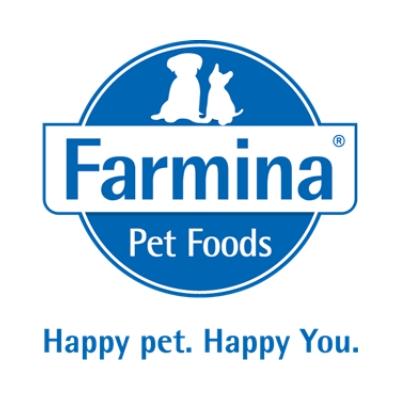Animals are typically amazing. They on intimate contact with the people can surely infect them somehow. Though, there are other modes of transmission as well. These animals are an important source of organisms that may either infect humans directly or indirectly. Particularly, they can be the source (reservoir) or the mode of transfer (vector) of certain organisms. When animals serve to be reservoirs they are known as zoonoses.

We observe World Zoonoses Day on 6th July every year to commemorate the efforts of Louis Pasteurs’ significant achievement of designing a vaccine and with an aim spread awareness about zoonoses.
Why do we care this much about being infected with zoonotic diseases?
A wide range of zoonotic diseases is caused by bacteria, viruses, or even some unconventional agents. The answer to the above-mentioned question lies in the fact that these days zoonotic are emerging as Public Health Problem. Engaging at this large scale at the level of the entire public demarcates how crucial the situation is.
Perhaps, zoonoses need to be tackled at the level of person and public both. Occupied with these nasty infectious agents are the counterpart to affected trading abilities when comes to food production in lineage to animals. This, in turn, will create obstacles for the trading regime.
Moreover, these zoonoses are far clever than we think. They develop antimicrobial resistance which further enhances their pathogenesis within an individual. The outcomes are disastrous as these pests offer a wide threat to the agricultural domain.
What are some common zoonotic diseases caused by your pets?
- Leptospirosis
- Lymes disease
- Giardia infection
- Adenovirus
- Scabies
- Rabies
- Harvest mites
- Cat scratch disease
- Toxoplasmosis
- Campylobacter infections
Are you at risk of getting a zoonotic disease from your cats and dogs?
Shreds of evidence suggest that pet dogs and cats are less likely to cause zoonotic diseases as they are kept indoors. Hence, reducing the risk of being the host of any of these zoonoses. Immunosuppressant people, therefore are having a weak immune system are at greater risk to get infected by these nasty creatures. Pregnant women and people with chronic diseases are at greater risk to get infected by any of these zoonoses.
Should you leave being with your pets if at risk?
No, not at all. All you should do is to take some basic precautionary measures. You should monitor your pets for any unusual behavior and symptoms. You should even keep a close check on your pets with the help of the vets. Some of the common symptoms which your infected pets may show are loose stool and diarrhea.
Which zoonotic diseases are common within masses spread via the dogs?
Rabies is the fatalist of all. The commonest even. Dogs usually transfer rabies virus via saliva, bite, or scratch. Though other organisms like cats, rabbits, and raccoons are even the vector for this virus. This turns out to be very lethal as Rabies virus affects the central nervous system and hence causing the inflammation of the brain. It is widely suggested to get your pets vaccinated against this virus as in long run it may cause paralysis in individuals.
Leptospirosis can cause serious liver and kidney diseases are again transmitted by dogs to humans. Gastroenteritis - inflammation of the enteric system is caused by certain infectious zoonotic agents which are Salmonella, Campylobacter, and Giardia.
Handling dogs’ feces can make you more prone to be affected by roundworms (Toxocara Canis) and tapeworms (Echinococcus species) causing liver diseases. You may even acquire zoonotic skin diseases caused by fungus Microsporum and Sarcoptes Scabies via physical contact.
Which zoonotic diseases are common within masses spread via the cats?
Cats are a source of numerous zoonotic organisms ranging from bacterial Salmonella and Campylobacter to parasitic Cryptosporidium and hookworms. These are usually transferred through physical contact or the handling of cats’ feces. One of the common zoonotic infection by the cats is Toxoplasmosis. This results from the parasitic entry of Toxoplasma Gondi when eating undercooked contaminated meat or through cats’ feces.
How can you reduce the risk of being infected by your cats and dogs?
- Proper hygiene of your cats and dogs is needed to be maintained to reduced zoonotic spread.
- All signs and symptoms should be addressed promptly to cater to the needs of your pets and your selves.
- Use of broad-spectrum deworming products. Thus, eliminating zoonoses at a better rate. A good way to escape from monthly heartworm attacks.
- Dispose of your pets’ feces appropriately. This makes you less like;y tp get infected by zoonoses.
- Do wash your hands properly each time you contact your pets.
- You may also use flea and tick control products on your pets.
- The litter box of your cat pets needs to be placed away from the kitchen.
- Be more proactive while handling your pets
- Do wear disposable gloves while cleaning litter boxes. Make sure you clean the litter boxes once or twice a week. This would simply exclude Toxoplasma organisms without giving you a headache.
- Feed your pets with high-quality products. This may boost their immune system.
- Do vaccinate your pets beforehand as suggested by the experts.
How to treat zoonotic diseases?
For appropriate guidelines, you should take help from your vets. Follow the prescription closely to get rid of zoonoses. Bacterial zoonoses diseases can be treated by various classes of antibiotics which include fluoroquinolones, penicillins, macrolides, and aminoglycosides.
Your veteran would opt for a particular generation drug for your pet to treat the disease. Moreover, for eradicating symptoms your pet doctor would prescribe you some symptomatic drugs as well. Flavinoids are the class of antimicrobial drugs that are found to be very effective therapeutic agents in the long run.
But be careful of giving your pets any of these drugs without prescription. Antibiotic and antimicrobial resistance is common these days further making zoonotic a challenge to the World of Sciences and especially MIcrobiology.













































